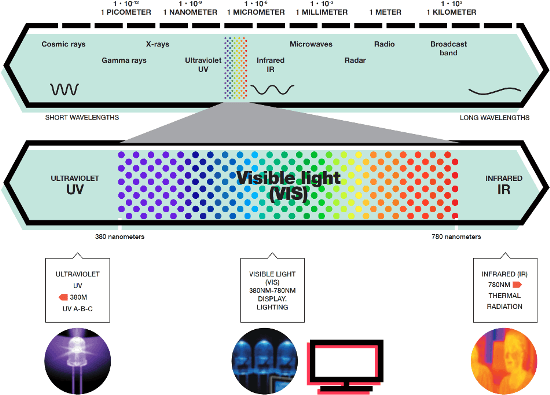From a biological standpoint, light is energy that activates the human eye and brain. It is the combination of the brain, eye and light that provides sight. In physics, there are two theories by which light can be defined: the first theory defines light as particles and the second theory as waves.

Image Credit: bartrak/shutterstock.com
When considering measurement equipment such as spectro[radio]meters, which measure light in wavelengths, the second theory is the most suitable to explain light. For this reason, this article focuses on wave theory.
The True Nature of Light
Following wave theory, light can be seen as a form of energy in the electromagnetic spectrum. This spectrum encompasses energy at different wavelengths, of which only a small portion ranging from roughly 380 to 780 nm can be perceived by the human eye.
The range just below 380 nm is described as ultraviolet [UV] while the range just above 780 nm is described as infrared [IR]. Even though these wavelength ranges are invisible to the human eye, they are also considered as light.

The illustration shows the visual spectrum in perspective of the entire electromagnetic spectrum and its wavelength ranges. Image Credit: Admesy
Light can only be seen when looking either directly at a luminous object, such as a lamp, or when looking at illuminated objects which reflect light from a source.
For example: in a completely black room with a light source on one side and an object on the other as shown in the image given below.
When looking into the light source, the eye can see the light coming directly. This light from the source is visible [A]. Light from the light source reflecting on the object [B] reaching the eye is also visible. The object is made visible from the reflecting light. However, no light is visible when looking straight ahead [C], although the light rays pass by: one would be staring at a black wall.

Image Credit: Admesy

 Download Admesy's Guide to Light for More Information
Download Admesy's Guide to Light for More Information

This information has been sourced, reviewed and adapted from materials provided by Admesy.
For more information on this source, please visit Admesy.